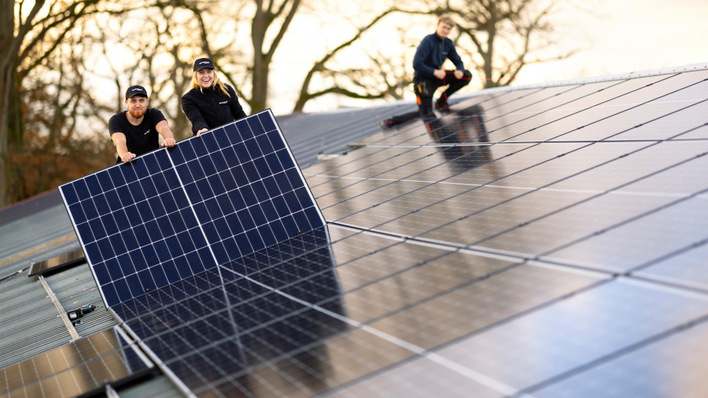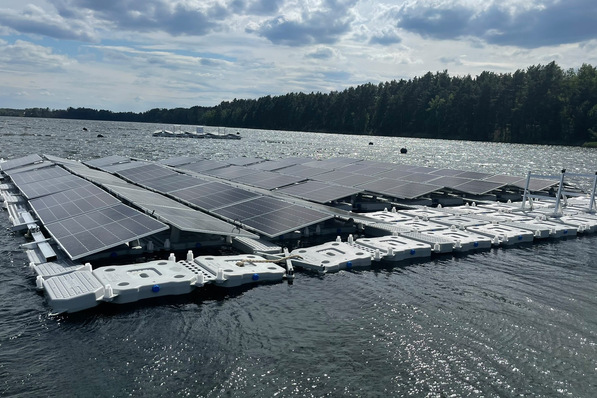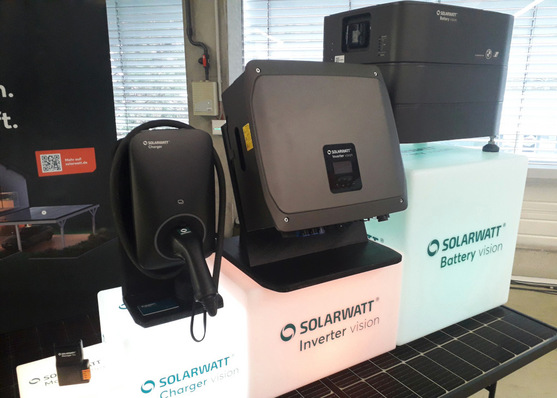Solar panels need zero maintenance. At least that is the mare in this sector. That this is not the case is clear from many roof-mounted generators. Starting with a lack of documentation: And without a precise panel plan, looking for faults and defects is almost pointless, or takes up a huge amount of time – and thus money.
Scaffolding is expensive
When it comes to solar façades, this problem is even more urgent: Localising the solar strings in an existing installation requires scaffolding. Only then can the technician remove panel by panel and check the connector sockets.
Solar façades are usually applied to commercial buildings, which makes the situation even more difficult, because in this case when locating possible faults in the wiring or the sockets, time is of the essence. Also, never underestimate the fire risk from hot spots behind the panels or faulty cable insulation.
Documentation without disassembly
The first thing is to make as precise a survey of the solar arrays as possible to quickly find any faults. Knowing where these faults are makes the effort of removing them, i.e. replacing or repairing panels, much more inexpensive. In former times, surveying an installation might involve removing panels and even opening up connector sockets. Today, that job is done by modern laser technology. As much as 100 kilowatts’ worth of solar generators can be surveyed in an hour in this way, resulting in a full panel plan.
And this is done from ground level without the need for expensive scaffolding. “Solar façades also require precise documentation and regular check-ups,” Klaus Terlinden of Flensburg-based Solartektor knows. “With façades being as extensive as they are calls for modern surveying equipment.”
All-in-one kit for error detection
Klaus Terlinden his colleague Oliver Lenckowski are the developers of the PV error detection kit LSI. It simplifies the localisation of errors in solar arrays, even if they are mounted vertically. This can happen regardless of the light level – even at night or under a light cover of snow or rime.
These two experts have already tested hundreds of installations, even very tricky ones. The principle behind it is very basic: Solartektor uses a blue laser to activate the solar cells in the panels. Further error-seeking equipment is also included. The LSI kit consists of three sub-components:
- Laser set,
- Signaltektor set,
- Isotektor set.
While thermographic methods or electroluminescence only work under certain light conditions, the laser is ready for action anytime.
Blue to the core
It all comes down to a 450 nanometres blue laser diode. The 75 millimetres front lens accurately focusses the laser beam for up to 100 metres.
The angle at which the laser beam hits the solar panels is irrelevant, which makes this system very convenient to use for façades and rooftops. Any workman or service technician may operate the laser. “It generates a pulsing signal, the energy of which is transferred to the solar cells,” Oliver Lenckowski explains. “This electric impulse is passed though the solar string and ends in the Lasertektor and is then sent to the wireless headphones of the operator.”
Always a free hand
This gives the solar technicians free hands to record the results of the measurement. The headphones are wirelessly connected at 860 megahertz, permitting a range of several hundred metres. Or they can be connected via walkie-talkies that achieve a range of up to eight kilometres.
To provide power, all devices of the PV error detection kit LSI are equipped with rechargeable batteries. Alternatively, they also run on disposable batteries. "In large systems with a solar output in the hundreds of kilowatts, the creation of a panel plan usually takes days," Lenckowski reports. "And doing this is unavoidable, because without a module plan, troubleshooting is like looking for a needle in a haystack. With our laser system, completing the panel plan for 100 kilowatts only takes an hour."
In this way, each panel can be individually checked externally, for example for short-circuits in the bypass diodes or defective cells. If the string is working correctly, the technician hears a clear signal over the wireless headphones. If that is not the case, then that means there is an error. Thus, it is possible to quickly locate defective panels. This saves considerable costs on dismantling defective panels or connectors.
System responds in real time
The system reacts in real time. As soon as the laser sends its energy into the panel, the acoustic signal can be heard. In this way, it is possible to sweep the laser along the panels very quickly and check how they are integrated into the strings. This works regardless of the angle at which the laser hits the panel and for all common types of solar panels, including thin-film.
The kit includes all common DC adapters for connecting the signal pick-up (Lasertektor) to the DC input of the string to be tested. To summarise, the following tasks can be performed with the laser kit:
Locate the panels within the string (generate or check panel plan),
Locate cable breaks within the panel,
Locate short-circuited bypass diodes,
Locate cable breaks between panels,
Determine the polarities within the string.
Errors in the DC wiring and insulation faults in the solar panels can also be located very quickly with this kit. The easy-to-handle case weighs a total of 25 kilograms. All the devices in it are designed for 1,000 volts and meet the protection standard IP 20. Technicians can buy the case (also as a lease-purchase) or lease it. The users of the PV error detection kit LSI are provided with training and, if necessary, with on-site advice on the use of the technology. (HS)
Discover Solartektor's product on video
Keep up with innovation in PV! Watch our PV Guided Tours at The Smarter E Europe in Munich:
https://www.pveurope.eu/Videos/pv-Guided-Tours-videos-2018
Stay informed, get our newsletter twice a week. Register here
Learn more about solar architecture and BIPV.
Read more about solar mounting systems.
Read more about solar energy storage.







